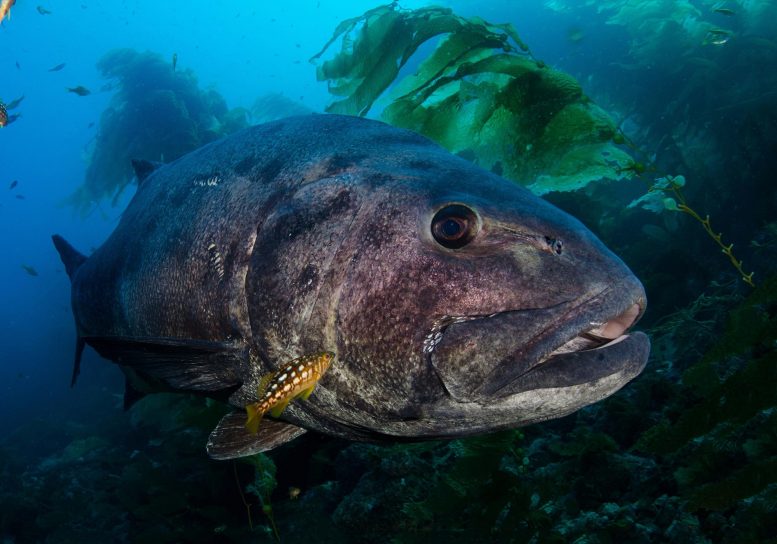 I was looking at the seafloor, focused on identifying fish species as I normally did when diving off of the California coast, when suddenly I felt something large above me. When I turned my head I saw a giant fish – more than 6 feet (2 meters) long – calmly interested in the air bubbles coming from my SCUBA regulator. This was 2016 and was my first encounter with a giant sea bass.
I was looking at the seafloor, focused on identifying fish species as I normally did when diving off of the California coast, when suddenly I felt something large above me. When I turned my head I saw a giant fish – more than 6 feet (2 meters) long – calmly interested in the air bubbles coming from my SCUBA regulator. This was 2016 and was my first encounter with a giant sea bass.
I am a marine ecologist, and I study how international borders pose challenges for conservation and management efforts in the marine environment. Although there are no walls or fences in the ocean, borders still act as stark barriers for a variety of things.
Giant sea bass live off the west coast of North America in both Mexican and U.S. waters. I have found that large differences in regulation and research effort between the two countries has led to a significant misunderstanding of giant sea bass population health.
Giant sea bass live in coastal waters from northern California all the way south to the Sea of Cortez. Credit: Arturo Ramiréz-Valdez, CC BY-ND
Different countries, different science
The giant sea bass is the largest coastal bony fish in the Northeastern Pacific. It can grow up to 9 feet (2.7 meters) long and weigh up to 700 pounds (315 kg). It lives in coastal waters from northern California to the tip of the Baja California peninsula in Mexico, including the entire Gulf of California.
In California, commercial fishing for the species began in the late 1880s. Large fish used to be very abundant across the entire range, but the fishery collapsed in the early 1970s. As a response, in 1981 the U.S. banned both commercial and recreational fishing for giant sea bass, and there are many ongoing research and population recovery efforts today.


 Advertising
Advertising